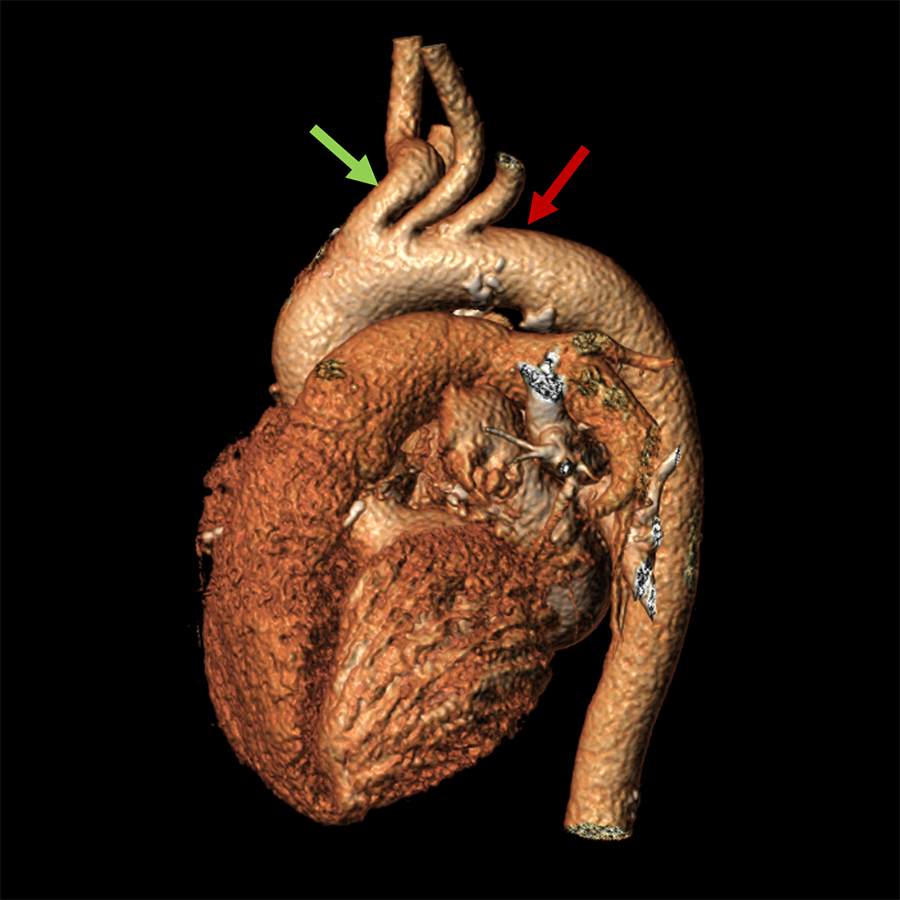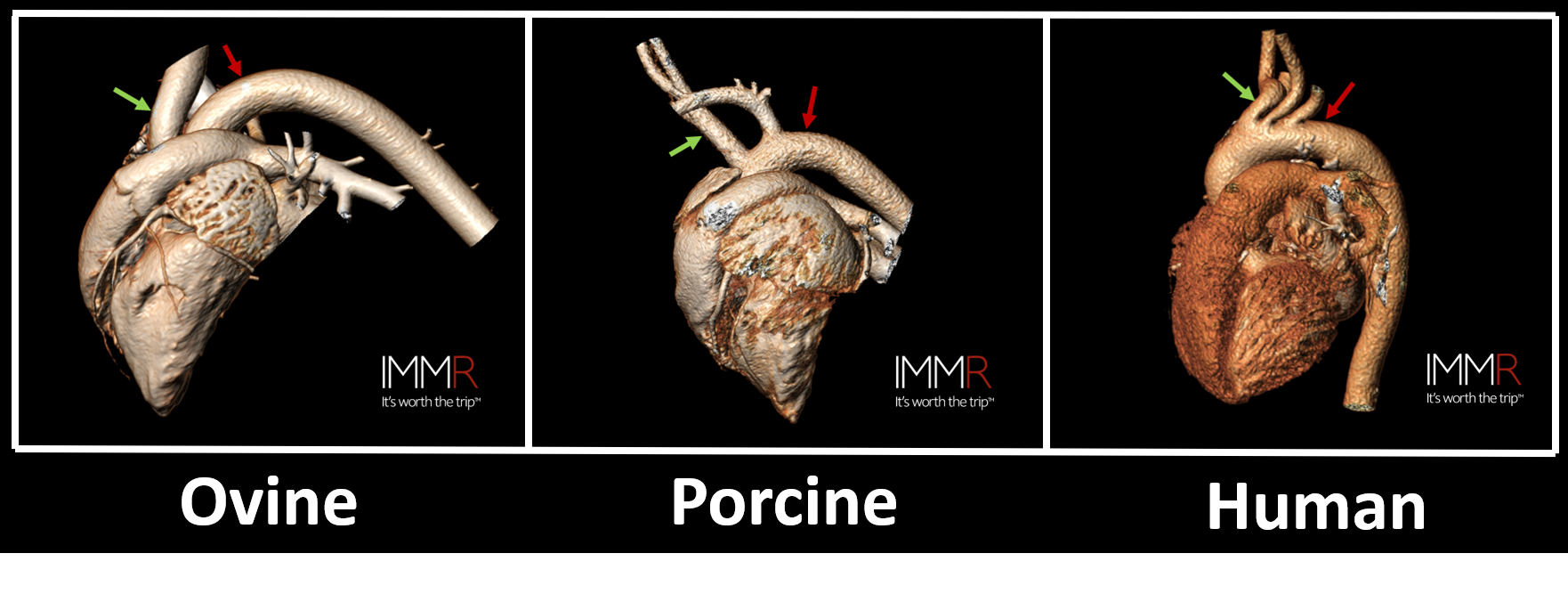Week of 2 February 2021

New IMMR feature: Second in a series of 3
This is an image of a human aortic arch!
Here’s how we know: From the aortic arch (red arrow) emerge three branches, (i) the left subclavian artery, (ii) the left common carotid artery, and (iii) the brachiocephalic trunk (green arrow). The brachiocephalic trunk bifurcates into the right subclavian artery and the right common carotid artery.
The arrangement of the aortic branches in humans and animals certainly varies between species. Nevertheless, there are close anatomic and physiologic similarities among sheep, pigs, and humans, and with appropriate expertise in comparative anatomy that is crucial in preclinical science, ovine and porcine species are both highly relevant models for translational research in cardiovascular intervention and surgery.

This CT scan image has been obtained with permission by IMMR’s imaging specialists from a scan of the image gallery of the Institut Mutualiste Montsouris, Paris, France.
You can now compare the images of the previous weeks to each other:

Comparative anatomy is key to understanding which models are best, their potential limitations and how to leverage this information to provide compelling evidence of safety and efficacy of a novel device.
Contact us to learn more and discuss your preclinical research and pathology needs.
Follow us on LinkedIn and don’t miss new images from our library that we post every Tuesday, when you’ll have another chance to recognize, identify or diagnose what is shown. You can also stay updated on some of the latest developments in Preclinical Science. Stay tuned!


